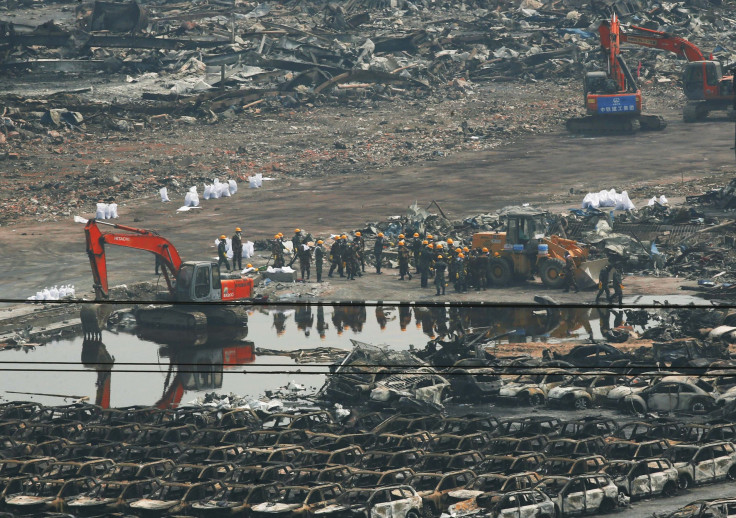Tianjin Explosion Update: Cyanide Levels In Waters Near China’s Blast Site At 356 Times The Standard Limits

Cyanide levels in waters around the blast site in Tianjin, China, is 356 times the standard limits, officials warned Thursday. Multiple blasts rocked a chemical warehouse, owned by Tianjin Dongjiang Port Ruihai International, in the Chinese port city last Wednesday, killing at least 114 people and injuring hundreds.
The Tianjin environmental protection bureau reportedly said that the chemical was detected in 25 water monitoring sites within the cordoned-off area around the blast site.
"An excessive level of cyanide was detected in eight locations with the highest reaching 356 times" the permitted level, the bureau said, according to Agence France-Presse (AFP).
Authorities previously said that cyanide tests had shown levels 28 times the standard limits, according to AFP. However, the bureau did not explain the sudden spike in cyanide levels. The chemical was reportedly detected at six of the 16 test points outside the alert area, all of which was within the permissible limits.
Search and rescue teams have been working to find 60 people still missing after the explosions. The teams also worked to clear dozens of tons of sodium cyanide at the site.
The forecast of rain in the region had further sparked fears as chemicals in the warehouse could form combustible substances if they came in contact with water, causing more explosions. Environmental officials also expressed concern that sodium cyanide could release poisonous hydrogen cyanide into the air if it rains.
Tianjin's Deputy Mayor He Shushan reportedly confirmed last week that about 700 tons of sodium cyanide stored at the warehouse blew up. He said that, "after searching, most was concentrated in the core" blast area.
© Copyright IBTimes 2024. All rights reserved.





















